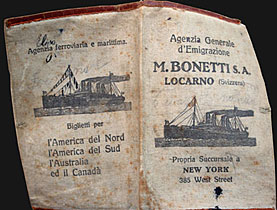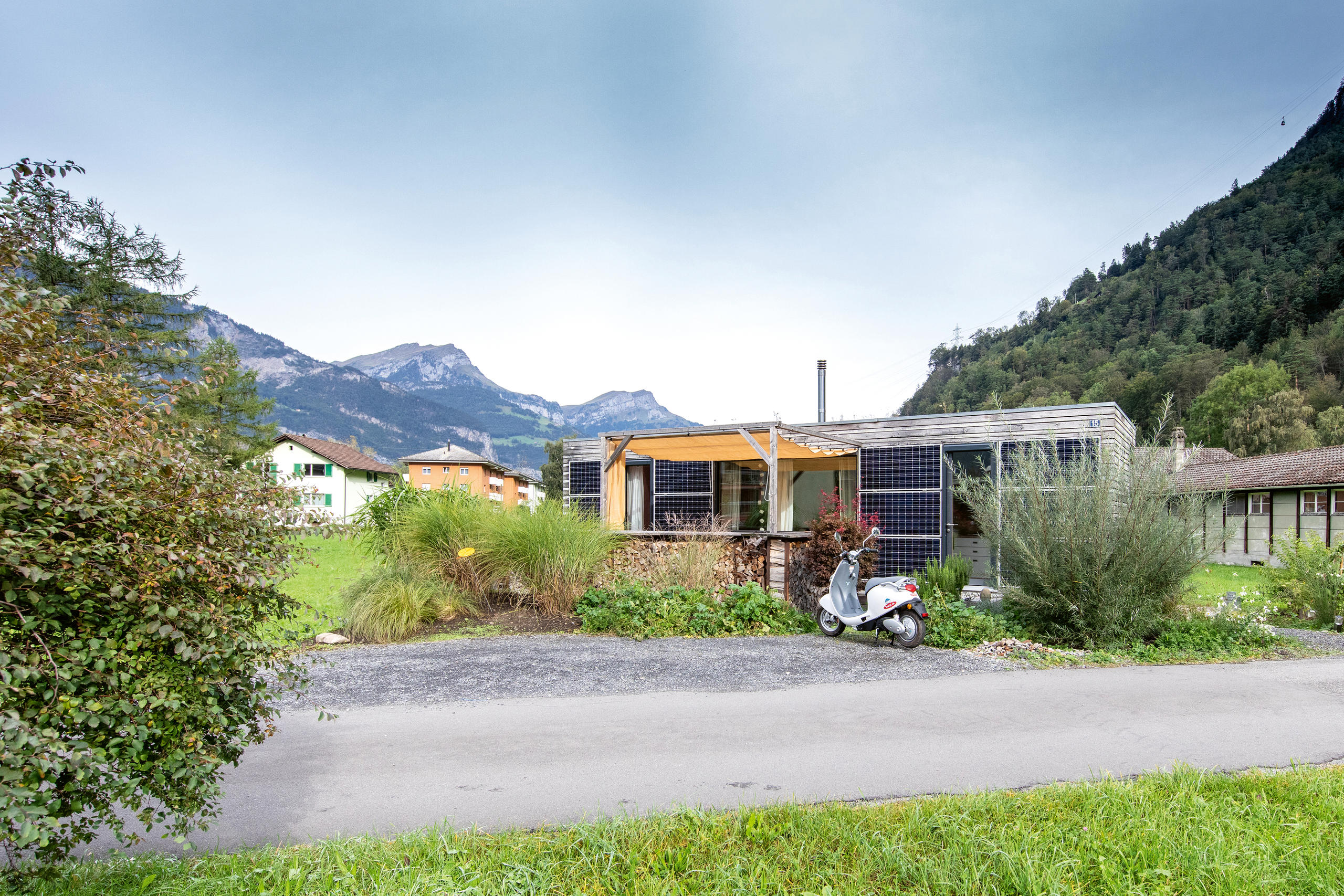How an architect from Ticino ended up designing Bolivia’s capitals

The seats of Bolivian legislative and religious power in La Paz, the Government Palace in the capital, Sucre, and just around the corner the most unlikely of fairytale castles. What all these buildings have in common is that they were designed by the Ticino architect Antonio Camponovo, who shaped the face of Bolivia’s two capitals.
One of Switzerland’s most prolific lines of architects has its roots in Mendrisio, in canton Ticino. However, to admire the buildings, one has to travel to the other side of the globe, to Bolivia.
After studying architecture in Turin and passing through Argentina, the brothers Miguel (1850-1921) and Antonio (1853-1938) Camponovo emigrated to the South American country at the end of the 19th century, as part of the strong wave of Swiss migration to the New World.

More
When Swiss Italians migrated en masse
Thanks to the dynamism of its mining sector, Bolivia experienced dazzling economic development at the time, with high commodity prices driven up by the Industrial Revolution in full swing in Europe and North America.
The government called on the Camponovo brothers in 1892 to build several of the country’s most emblematic monuments. Although Miguel spent most of his career in the small town of Tarija, in the south of the country, he assisted his brother Antonio in all his projects, and vice versa.

In the only capital at the time, Sucre, Antonio Camponovo helped build the Government Palace in 1892. He then built the Glorieta Castle for Francisco Argandoña, a mining magnate.
The building is an eclectic mix of architectural styles: the central body is reminiscent of the Florentine Renaissance and Byzantine styles; one enters the residence through an Arabic portico; there is a chapel topped by a Gothic bell tower, a crystal viewpoint and a bulbous minaret. Finally, a tower replicating London’s Houses of Parliament crowns the whole. Sometimes criticised and ridiculed for its disparate appearance, reminiscent of Xanadu, the palace in the film Citizen Kane, the Glorieta is now a must-see on any visit to Sucre.

In charge of public works
Antonio Camponovo then moved to La Paz, which became the seat of government in 1899 following a brief civil war, with Sucre remaining the constitutional capital.
As director of public works, he was responsible for completing the construction of the cathedral. “My wish is that, tomorrow, the great people of La Paz will be able to boast of having the most sumptuous temple in South America,” he wrote in a letter to the city authorities.

More
How centuries of Swiss emigrants left their mark on the US
The first building was erected in the 17th century and then demolished in 1831 because it was in danger of collapsing. Construction work began in 1835, but suffered a number of setbacks, including financial problems and the loss of the original plans.

The design was stormy, with much controversy between the architect and the religious and municipal authorities. The cathedral was finally inaugurated a century later, in 1935 – Antonio Camponovo having passed the baton to the Italian Ernesto Vespignani for its completion. The two side towers were added in 1989, in a bit of a rush, to mark the visit of Pope John Paul II.
Representation of political power
After the religious building, Antonio Camponovo set about representing political power by building the Legislative Palace on the same square between 1905 and 1907.

Since 2014, the hands of the clock on the Palace have been turning backwards, as a symbol of the rejection of the practices imposed by the north on the southern states. In this hemisphere, the sundials that inspired the watches indeed turn the other way round. What’s more, the building is now overlooked by a gigantic black cube, the summit of the new multinational legislative assembly building, completed in 2021, while the Great House of the People, inaugurated in 2018, towers above the cathedral.
According to Bolivian writer Eduardo Machicado, whose father worked with the Swiss architect, “Antonio Camponovo took a decision that changed the face of La Paz. He realised that the granite that had been used until then, which was extracted from the Rio Choqueyapu, the river that runs through La Paz, was of poor quality because it contained iron. Instead, he brought in granite from Comanche, a locality in the La Paz district, which was purer. Many historic buildings, as well as the city’s paving, were made using this stone”.
Camponovo also renovated the façade of the Alberto Saavedra Pérez municipal theatre in 1910, which features arabesques and floral motifs typical of the Art Nouveau style then in vogue.

In addition to large public works and the homes of millionaires, Antonio Camponovo built himself an elegant house in La Paz in 1907. It is located on the Prado, now lost in a mushroom field of new buildings. He lived there for only a short time, returning to Argentina to live until his death in 1938. He had three daughters and a son, Arnaldo Camponovo, who also became an architect. His residence in La Paz, which he called the “Swiss chalet”, later became a hotel. It is now a nightclub and a restaurant selling fried chicken on the ground floor.

More
Swiss embassy in Bolivia faces closure due to cost cuts
This subject was the subject of an earlier publication, A tribute to Swiss architects in BoliviaExternal link, published by the Swiss Embassy in Bolivia in July 2024.
Edited by Emilie Ridard/sj. Translated from French by DeepL/ts

In compliance with the JTI standards
More: SWI swissinfo.ch certified by the Journalism Trust Initiative









You can find an overview of ongoing debates with our journalists here . Please join us!
If you want to start a conversation about a topic raised in this article or want to report factual errors, email us at english@swissinfo.ch.